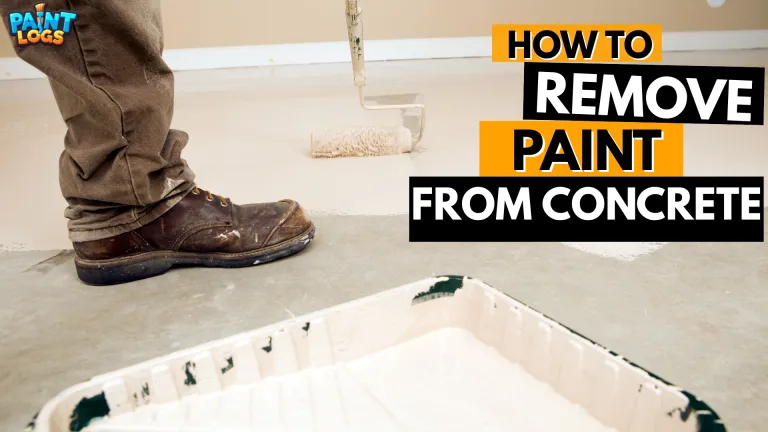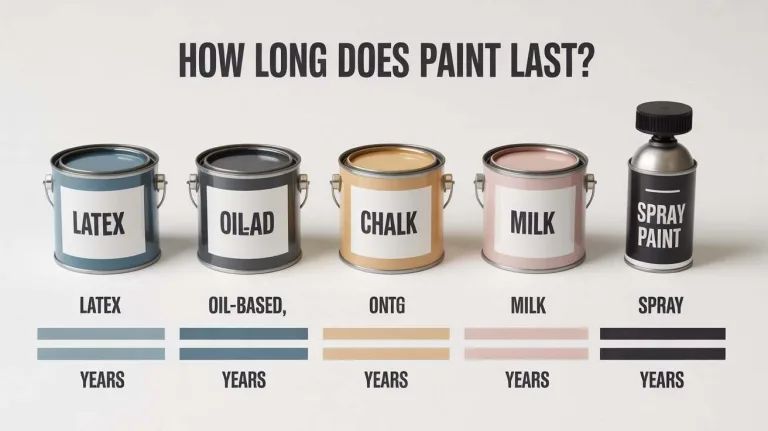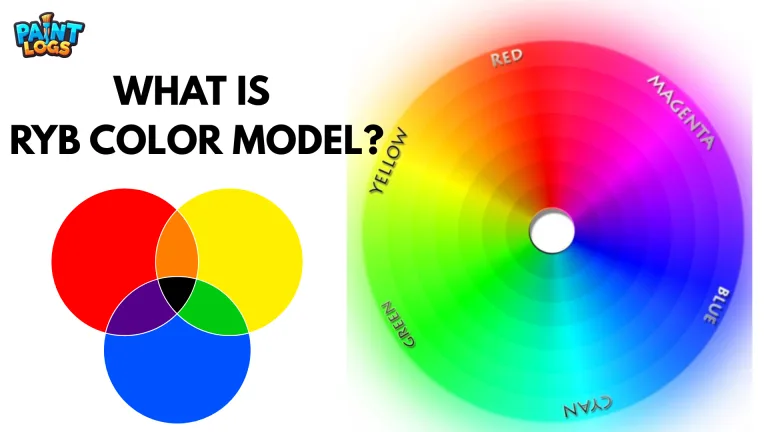If you’ve ever touched your oil painting days later and found it still soft or tacky, you’re not alone. Oil paint doesn’t behave like acrylics—it has a rhythm all its own. One day, your surface feels dry. The next, it’s still sticky under pressure. Understanding why How Long Does Oil Paint Take to Dry and what affects it is essential if you want more control over your painting process.
This guide walks you through what really determines oil paint drying time, how it differs by surface and pigment, and what you can actually do to help it dry faster—without compromising your art.
Why Oil Paint Dries So Slowly
Oil paint doesn’t dry by evaporation like water-based media. Instead, it cures through a slow chemical reaction with oxygen in the air, called oxidation. This process can’t be rushed with a hairdryer or fans in the same way acrylics or watercolors can.
Oil paint drying time by color varies. Earth pigments like burnt umber dry faster. Earth tones like burnt umber or raw sienna tend to set much sooner than colors like titanium white, cadmium red, or alizarin crimson. It also matters how thick your paint is. Thin glazes can dry in a couple of days, while thick impasto areas can stay soft for weeks.
So, if your painting feels dry on the surface but mushy underneath, it’s probably still curing—oxidation happens gradually, from the outside in.
| Pigment Color | Typical Drying Speed | Notes |
|---|---|---|
| Burnt Umber | Fast | Earth tone; dries quickly in thin layers |
| Raw Sienna | Fast | Great for underpainting |
| Cobalt Blue | Moderate | Dries faster than most blues |
| Titanium White | Slow | Heavy pigment, slow to oxidize |
| Cadmium Red | Slow | High oil content; retains tackiness |
| Alizarin Crimson | Very Slow | Deep hues slow oxidation significantly |
| Ivory Black | Very Slow | Often stays soft for weeks |

How Long Oil Paint Takes to Dry by Surface
Different surfaces change how oil paint dries. Here’s what to expect with some common ones:
| Surface | Touch Dry Time | Notes |
|---|---|---|
| Canvas (Primed) | 2–5 days | Most common surface; thicker areas can take weeks |
| Wood Panel (Primed) | 5–10 days | Must be sealed to avoid oil absorption and patchy drying |
| Plastic | 7–14+ days | Non-absorbent; poor adhesion without sanding or priming |
| Metal | 7–14+ days | Similar to plastic; requires primer or oil-based ground |
| Paper (Oil-Prepped) | 3–5 days | Faster drying, but raw paper can absorb too much and warp |
| Furniture/Doors | 7–14 days (handle); 3–4 weeks (varnish) | Needs full curing before sealing or heavy use |
- Canvas is the most typical painting surface. A primed canvas with a thin layer of oil paint usually dries to the touch in about 2 to 5 days. But if the application is heavy or built up with texture, it can take a week or longer. Artists on Reddit often report that their canvases feel dry in a week but remain soft underneath for a month or more.
- Wood panels dry more slowly unless they’re properly sealed. Raw wood absorbs oil unevenly, which can slow drying and cause dull spots. With proper priming, oil paint on wood takes about 5 to 10 days to feel dry in thin layers.
- Plastic is non-absorbent and slick, so paint takes longer to set. It might take 7 to 14 days for a standard layer to dry. Without sanding or priming the plastic, the paint may never cure evenly.
- Metal behaves like plastic in that it’s non-porous. Oil paint on metal, even with proper priming, typically takes at least 7 days to dry. Heavier or glossy layers can take much longer.
- Paper dries relatively quickly, especially if it’s gessoed or oil-prepped. Oil paint on treated paper can be touch-dry in 3 to 5 days. But raw paper soaks in oil, which can damage it over time and cause inconsistent drying.
- Functional surfaces, like doors or furniture, need special attention. If you’re painting a door with oil-based paint, give it a full 7 to 14 days before any handling. For varnishing or sealing, most professional painters—like Chuck Black—recommend waiting a full 3 to 4 weeks.

What Affects How Fast Oil Paint Dries
Several overlapping factors contribute to how quickly—or slowly—your oil paint dries. These don’t work in isolation, and they often compound one another.
The pigment itself makes a huge difference. Earth colors and metal oxides like burnt umber, raw sienna, and cobalt blue tend to dry faster. Titanium white, ivory black, cadmium reds, and alizarin crimson are much slower. The reason? Each pigment has a different chemical structure and oil absorption rate.
Thickness matters. The thicker your application, the longer it will take to oxidize all the way through. A razor-thin glaze could be dry in 24 hours, while a palette-knife impasto may still be tacky after several weeks.
The brand you use also plays a role. Winsor & Newton, Gamblin, and Michael Harding all have their own oil-to-pigment ratios and may include or exclude certain drying agents. Gamblin paints, for example, often feel drier faster, while some traditional brands prioritize pigment purity over speed.
Mediums impact drying speed dramatically. Linseed oil slows it down. Walnut and poppy oils slow it even more. On the other hand, alkyd-based mediums like Liquin or Galkyd can cut your drying time in half. Artists often switch to these when working under deadlines.
Room conditions are another big one. A warm, dry, well-ventilated studio will always help your oils dry faster. Cold and humid rooms delay oxidation. If you’re painting during winter, especially in a garage or basement, expect things to move slowly.
Surface absorbency plays a subtle but important role. A more absorbent surface like canvas or paper will wick oil away, helping paint set faster. Metal and plastic don’t absorb at all, so the paint sits on top and takes much longer.
| Factor | Effect on Drying |
|---|---|
| Pigment Type | Earth pigments dry faster; synthetic and modern pigments dry slower |
| Paint Thickness | Thicker paint takes significantly longer to oxidize fully |
| Brand & Formulation | Brands vary in oil ratios and drying agents (e.g., Gamblin dries faster than Old Holland) |
| Medium Used | Alkyds = faster; linseed = slow; poppy = slowest |
| Room Conditions | Warm, dry rooms = faster; cold, humid = slower |
| Surface Absorbency | Absorbent surfaces help oils cure faster; slick surfaces slow the process |
How to Make Oil Paint Dry Faster?
If you’re on a schedule or just eager to keep your painting moving forward, there are ways to speed up drying—without compromising your work.
| Method | Impact | Caution/Tip |
|---|---|---|
| Use Alkyd Medium (Liquin, Galkyd) | Can dry in 6–24 hours | Avoid overuse—can alter paint texture |
| Paint in Thin Layers | Increases air exposure, faster oxidation | Use “fat over lean” layering rule |
| Choose Fast-Drying Colors | Earth pigments speed up first layer drying | Great for underpainting |
| Improve Ventilation | Increases oxygen for oxidation | Use a fan nearby, not directly on painting |
| Add Gentle Heat | Studio temp ~70°F (21°C) ideal | Avoid high heat; no hairdryers |
| Use Drying Boxes or UV Cabinets | Controlled environment speeds up process | More common in professional setups |
| Use Chemical Driers (Cobalt, Japan) | Drastically speeds drying in small doses | Use sparingly—can cause cracking or yellowing |
- Adding a fast-drying medium is one of the easiest ways. Products like Liquin Original (by Winsor & Newton) or Galkyd (by Gamblin) are widely used by professionals. These can get your painting dry to the touch within 6 to 24 hours in ideal conditions.
- Painting in thin layers helps tremendously. Following the fat-over-lean rule—starting with lean, less-oily underlayers and building up to richer top layers—encourages even, faster drying from the ground up.
- Choosing faster-drying pigments for your base layers can give you a head start. Burnt umber, cobalt blue, or raw sienna make great foundations if you want to speed up the process without additives.
- Improving ventilation also helps. Some artists use a box fan set on low to circulate air in the room—not aimed directly at the painting, but just enough to increase oxygen exchange.
- Heat can also be effective, though you’ll want to be cautious. A warm studio set to around 70°F (21°C) helps. Some artists go a step further by using UV drying boxes, though that’s more common in professional studio setups.
- A few artists use chemical drying agents like cobalt drier or Japan drier. These are effective but must be used sparingly—just a drop or two per batch of paint. Too much can cause yellowing or cracking down the line.

When Can You Varnish an Oil Painting?
This is one of the most misunderstood parts of working with oils. Just because your painting feels dry to the touch doesn’t mean it’s fully cured. Oxidation continues under the surface for weeks and months.
Most artists, including those at WetCanvas and professionals like Chuck Black, recommend waiting at least six months before applying varnish. This allows all the layers of paint—not just the outermost skin—to cure properly.
If you varnish too early, you risk trapping solvents and moisture, which can cause hazing, yellowing, or even peeling years later.
A good test is to press your fingernail gently into the thickest part of your painting. If it leaves an impression, it’s not ready.
| Drying Phase | Timeframe | Action |
|---|---|---|
| Touch Dry | 2–10 days | Still curing inside—do not varnish |
| Surface Firm | 1–3 months | Still risky; wait longer if unsure |
| Fully Cured | 6–12 months | Safe to varnish |
Conclusion
Drying oil paint is part science, part experience. Once you understand how pigments, mediums, and surfaces behave in your studio, you can start making choices that support your workflow and goals. Speed isn’t everything, but having the option to work faster—with control—can open up new creative possibilities.
If you’ve been frustrated by slow drying times, take a closer look at your materials and studio setup. A few small changes can make a big difference. And if you’re ever unsure, give your painting time—it’s better to wait than to rush and regret.
FAQs
Does using Liquin really help oil paint dry faster?
Yes, Liquin and other alkyd-based mediums can significantly reduce drying time. Paintings that normally take several days to dry may become touch-dry within 24 hours when Liquin is used in thin layers.
Why is my oil painting still tacky after several days?
A sticky surface after a week often means too much oil was used in the underpainting. Excess oil slows oxidation and can leave the paint soft for much longer than expected.
Is it useful to track drying times for different pigments?
Definitely. Keeping notes on how different colors and mediums behave in your studio environment can help you plan better and avoid surprises. Drying times can vary widely depending on climate and material choices.
Can UV lights or drying boxes speed up oil paint curing?
Yes. Controlled UV light or warm, ventilated drying boxes can encourage faster curing without damaging the painting. They’re especially helpful in cool or humid spaces where paint dries more slowly.
How long does oil paint take to dry completely?
Full curing usually takes six to twelve months. Even if it feels dry after a week, deeper layers may still be soft.
Can I dry oil paint overnight?
Yes, with the help of fast-drying mediums like Liquin, thin layers, and good airflow, many paintings can be touch-dry in 24 hours.
Does the surface type really matter?
Absolutely. Absorbent surfaces like canvas or paper help paint dry faster. Non-absorbent surfaces like plastic or metal slow things down.
Is it safe to use a hairdryer on oil paint?
No. Hairdryers don’t speed up oxidation and can cause the paint to skin over too quickly, trapping moisture or leading to cracking.
What’s the fastest way to dry oil paint?
Use a fast-drying medium, work in thin layers, choose quick-setting pigments, and keep your studio warm and ventilated.







